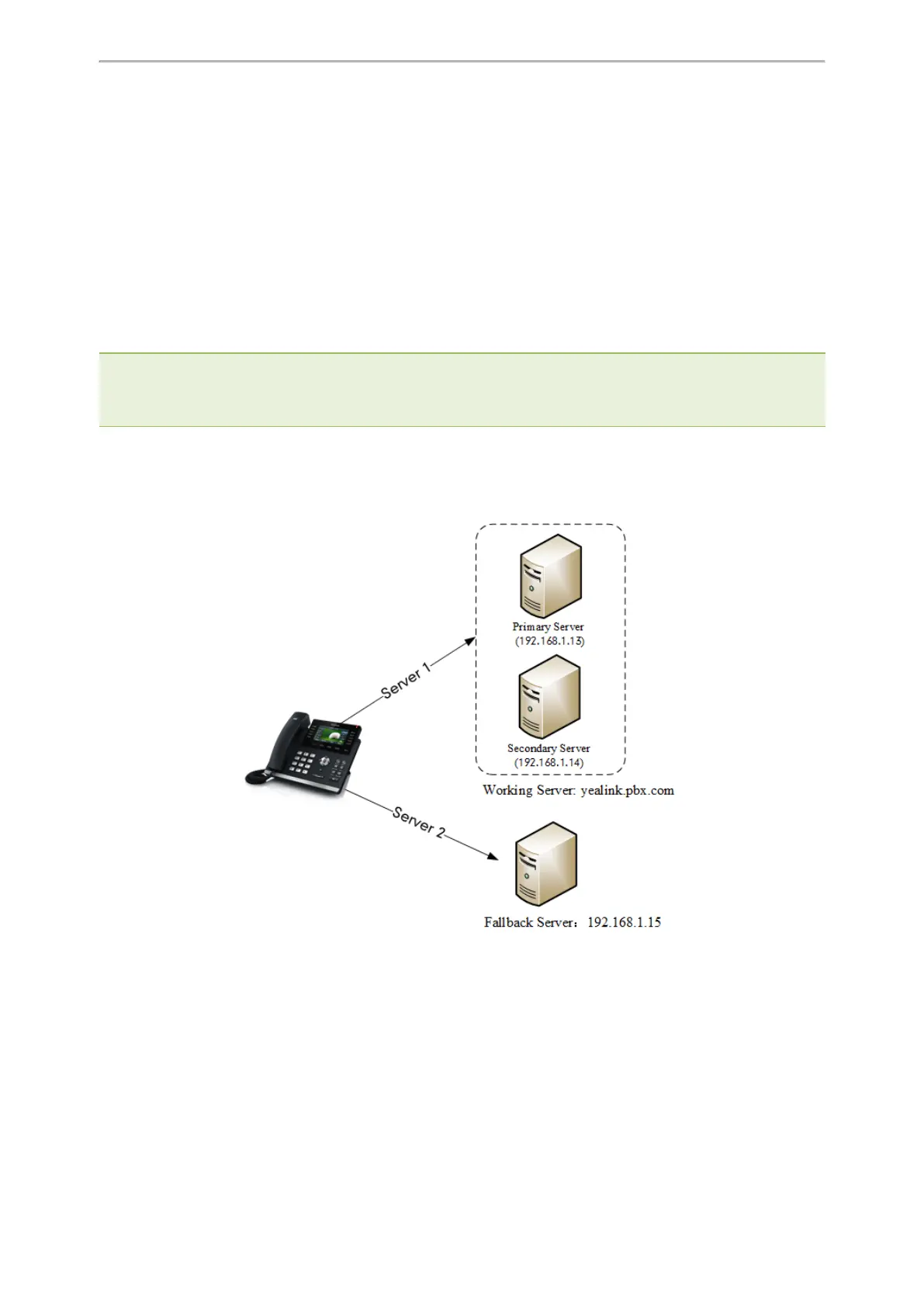Account Settings
300
Server Redundancy
Server redundancy is often required in VoIP deployments to ensure continuity of phone service, for example, take
the call server offline for maintenance, the server fails, or the connection between the device and the server fails.
Two types of redundancy are possible. In some cases, a combination of the two may be deployed:
l
Failover: In this mode, the full phone system functionality is preserved by having a second equivalent capability
call server take over from the one that has gone down/off-line. This mode of operation should be done using the
DNS mechanism from the primary to the secondary server. Therefore, if you want to use this mode, the server
must be configured with a domain name.
l
Fallback: In this mode, a second less featured call server with SIP capability takes over call control to provide
the basic calling capability, but without some advanced features (for example, shared line and MWI) offered by
the working server. The phones support configuration of two servers per SIP registration for the fallback purpose.
Note: For concurrent registration mode, it has a certain limitation when using some advanced features, and for successive
registration mode, the phone service may have a brief interrupt while the server fails. So we recommend that you use the fail-
over mode for server redundancy because this mode can ensure the continuity of the phone service and you can use all the
call features while the server fails.
Phone Configuration for Redundancy Implementation
To assist in explaining the redundancy behavior, an illustrative example of how an IP phone may be configured is
shown below. In the example, server redundancy for fallback and failover purposes is deployed. Two separate serv-
ers (a working server and a fallback server) are configured for per line registration.
l
Working Server: Server 1 is configured with the domain name of the working server. For example yealink.p-
bx.com. DNS mechanism is used such that the working server is resolved to multiple servers with different IP
addresses for failover purpose. The working server is deployed in redundant pairs, designated as primary and
secondary servers. The primary server (for example, 192.168.1.13) has the highest priority server in a cluster of
servers resolved by the DNS server. The secondary server (for example, 192.168.1.14) backs up a primary
server when the primary server fails and offers the same functionality as the primary server.
l
Fallback Server: Server 2 is configured with the IP address of the fallback server. For example 192.168.1.15. A
fallback server offers less functionality than the working server.
